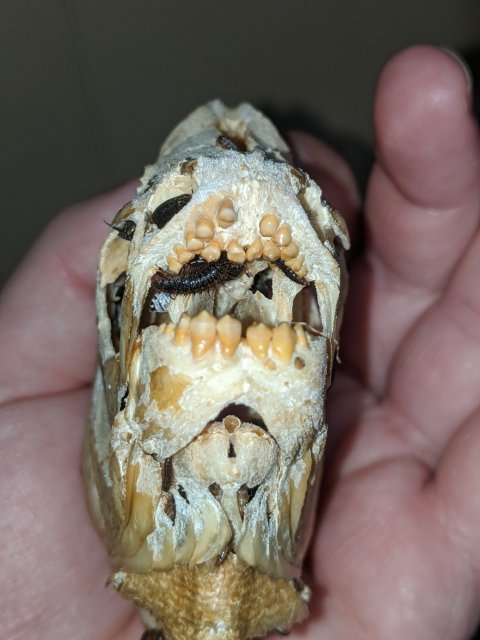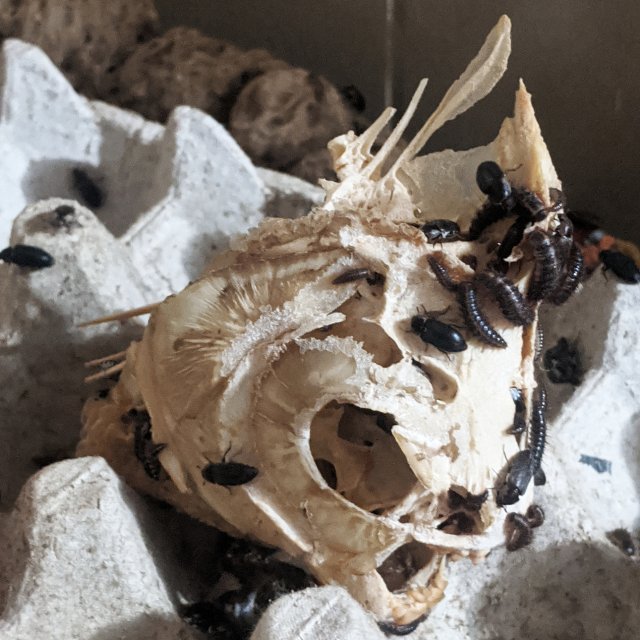Each skull is unique even within the same species. Usually I remove as much flesh as I can by hand then dry them a bit before feeding them to my Dermestid beetles. They are the same beetles used by museums and forensic labs. Once the beetles are finished I move on to degreasing and then to whitening. Bones are full of grease. It must be removed properly or the bones can smell bad or even rot or mold over time as the fats make their way to the surface. Degreasing can take weeks to months. The final step is whitening. This is pretty standard. Just use peroxide and leave it in the peroxide until the bone is the desired whiteness. Usually I leave a bit of color to my skulls. Bright white is ok but sometimes it leaves the skulls without depth or character.
So the final step is to glue any pieces back together that have fallen off. In mammals that could be just teeth. In reptiles it might be up to 20 bones, and then there's fish. Fish basically have an entire skeleton as a skull with dozens or in some cases hundreds of bones that must be glued back together in the correct anatomical fashion. It requires an intimate knowledge of fish anatomy as well as being crafty or artistic.

. Hope this answers the questions.
There are many methods of cleaning bones. Maceration also works well but everything always falls apart Everytime and it's stinky. You can bury but you are not likely to find all the bones once dug up plus the bones stain from the dirt. I sometimes use a weak acid to clean delicate tiny bones. It's a method known as the oxidization method. Another method is using digestive enzymes to remove flesh but it is terribly difficult and expensive to find the correct enzymes. Finally there is boiling which I advise against at all costs. High temperatures can actually degrade the bonds that hold the bone together and it will flake and fall apart over time depending on the damages done. Also heat can warp bones especially fragile fish bones. Another tip is to never ever use bleach for any reason. It does similar damages to heat but much faster. You will end up with bone soup.
Each fish skull takes anywhere between a few weeks up to a year or more for a large tuna. The bigger the skull the longer it takes. Degreasing is the longest part by far. I have a tuna skull that has been degreasing for over a year and nowhere near finished.






